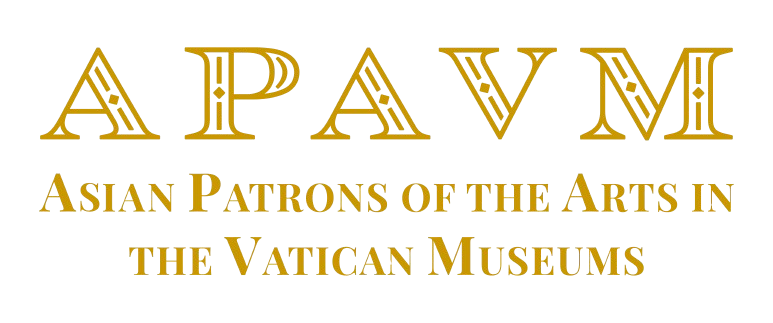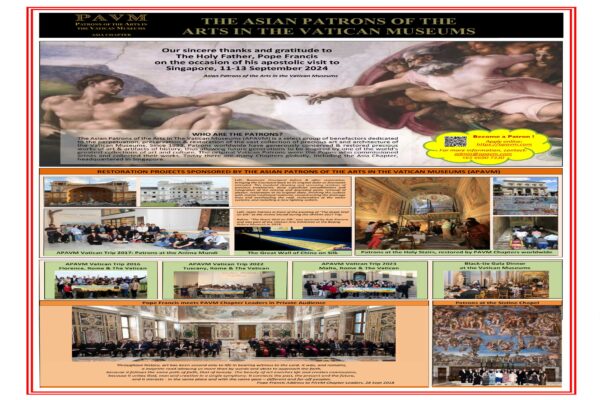Twenty six people attended the event “CHIJ – The Inside Story” on 16 October and came away informed and inspired by the work of the Infant Jesus sisters in Singapore. The event began at the Annex building of the Cathedral of the Good Shepherd where Infant Jesus sister Julia Ong IJ gave a very engaging talk on the founding and subsequent works of the IJ sisters.
Sister Julia said that Blessed Nicholas Barre, a French priest was moved with compassion by the poverty and abuse of child labourers in 17 century France. He then founded a group of sisters to educate poor women and children so that they could have a chance to be lifted out of poverty. The communities of sisters grew and schools were started all over France.
In the mid nineteen century Singapore, French MEP priest Father Jean Marie Beurel had completed his task of building the Church (now Cathedral) of the Good Shepherd and turned his focus on opening Catholic schools for the people in Singapore. He went to France in 1852 and brought 4 IJ sisters to Singapore but circumstances did not allow them to start a school in that year. Father Beurel persisted and in 1854 brought in Mother St Mathilde Raclot and 3 other IJ sisters who were housed in a dilapidated house at the corner of Victoria Street and Bras Basah road. This house was built for a Mr Caldwell and was bought under the name of Father Beurel by a generous donor Mr Cassette.
Mother Mathilde and her sisters wasted no time cleaning up the place and making it habitable. In 10 days the resourceful sisters opened the doors of the first Infant Jesus school in Singapore in Caldwell house. They took in paying students and orphans. The fees of the paying students supported the care and education of the numerous orphans who were abandoned outside the famous Gate of Hope at the corner of Victoria Street and Bras Basah Road.
The IJ sisters lived in and began their school in a dilapidated house but gradually through their hard work and with the help of benefactors managed to buy the adjacent properties bit by bit until their compound extended all the way to Stamford Road. The sisters opened both English (CHIJ primary and secondary) and Chinese (St Nicholas’ primary and secondary) schools for girls, a kindergarten and a commercial school, while running an orphanage at the same time.
Sister Julia then brought us over to the CHIJMES complex to point out features in the buildings that silently continue to tell the story of the IJ sisters and their mission. Our first stop was the Gate of Hope where the sisters would find abandoned babies left outside.
We were allowed to go upstairs to Caldwell House to view the community room of the IJ sisters. The words “Walk in the presence of the Lord and be perfect” were painted on the wall in French by the early sisters and have been preserved and are still visible. This was room where the sisters marked their students’ work and sewed. The early French sisters were renowned for their lace making skills in Singapore. Sales of their fine needlework helped to fund their work.
We were then brought to the “jewel” in the CHIJMES complex: the CHIJ chapel. The beautiful domed chapel with its numerous stained glass panels was a centre of peace and hope to legions of students who would go there to pray, especially before exams. When not used for events now, the deconsecrated chapel is a mini museum with story boards and a video presentation of the history of the IJ sisters in Singapore.
Sister Julia showed us a building in the compound that used to be a hotel. Sleazy business took place there and Mother St Mathilde managed to raise money to buy the building so that she could stop girls from being trafficked in the hotel and at the same time use the building for a school.
Another building in the complex had 26 doors with the face of Buddha and the Buddhist wheel of life over each door. This building was donated by Chinese Buddhist merchants and showed that the sisters had good relations with people of other faiths.
Another surprise was a spiral wrought iron staircase with the Islamic motifs of the crescent moon and star decorating it. The donor of this staircase is unknown but is suspected to be the Sultan of Johor who had donated a similar staircase to the Church of Our Lady of the Nativity in Hougang.
The capitals on some of the columns in the complex had unique artistic designs that were not identical and made from the same mould. Sister said that these were probably made by indentured labourers from India whose supervisor gave them free reign over the design of the capitals which depicted various motifs from their homeland.
The evening concluded with a delicious Italian dinner at Trattoria La Fiandra which is in the Singapore Art Museum. This SAM building originally housed the first Catholic boys’ school in Singapore, St Joseph’s Institution, founded by the La Salle Brothers. The first Brothers were also brought over from France by Father Beurel together with the first batch of IJ sisters in 1852. Sister noted that St John-Baptist de La Salle, the founded of the La Salle brothers, derived his inspiration to open schools for boys from Blessed Nicholas Barre. St John-Baptist was in fact helping the then newly founded order of the Infant Jesus in France and was inspired by the work of the sisters.
Many who attended that evening were old girls of a CHIJ school or had daughters who attended one of the schools. Many reminisced over the time they had spent in “Town Convent” and the places they used to haunt. One lady attended the commercial school and pointed out the location of her classroom near the chapel and the spiral staircase she had to climb to go upstairs. Another lady who does mission work in Cambodia teaching poor girls how to sew said that the work of the sisters affirmed her own work.
“Be like a feather in the wind” was an exhortation given by Blessed Nicholas Barre. Like feathers, the early Infant Jesus sisters willingly left their home in France, to be blown by the Holy Spirit in response to the needs of a far off colony in South East Asia. At the peak, the sisters had a network of 97 schools throughout Singapore and Malaya. Their legacy lives on in the countless ladies that were blessed to have had an IJ education.




